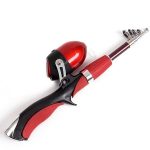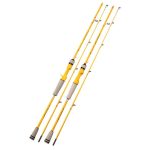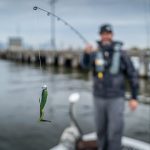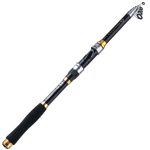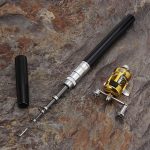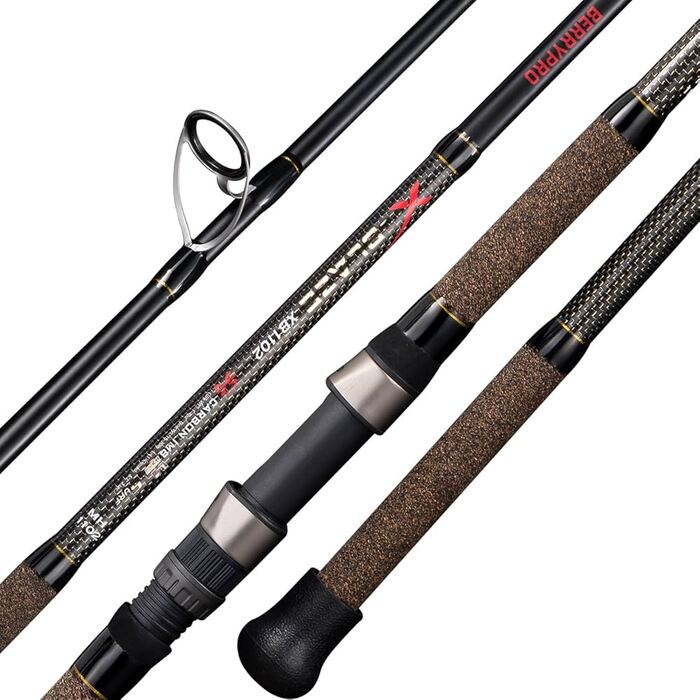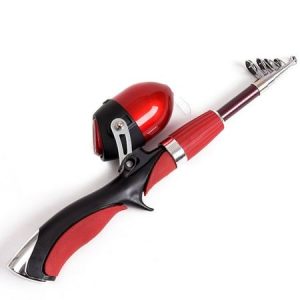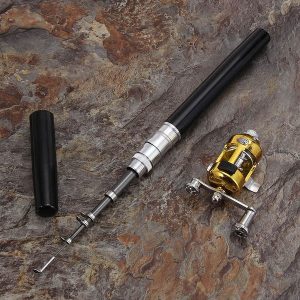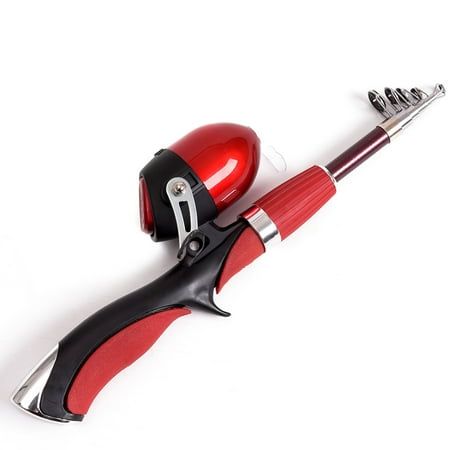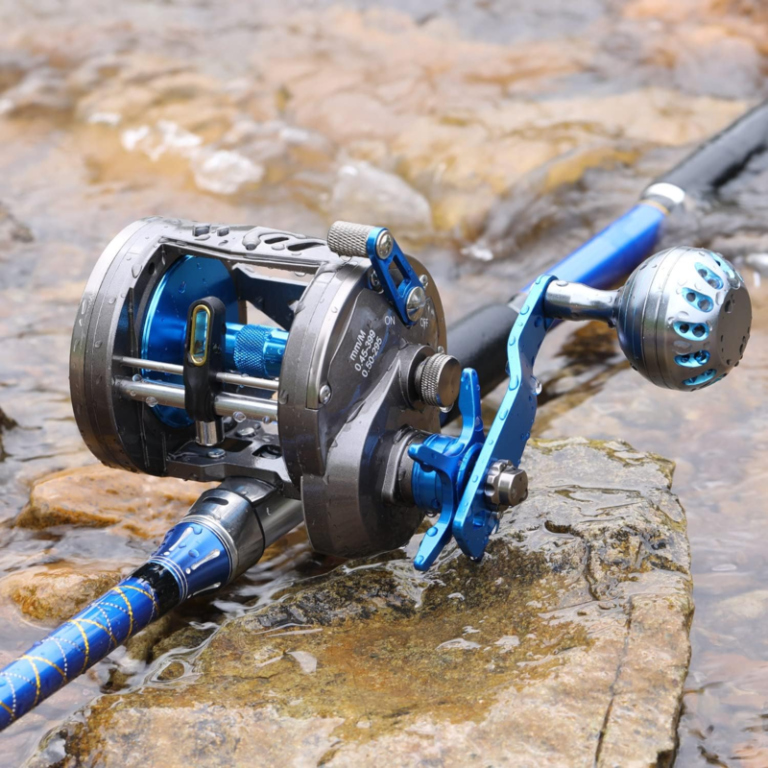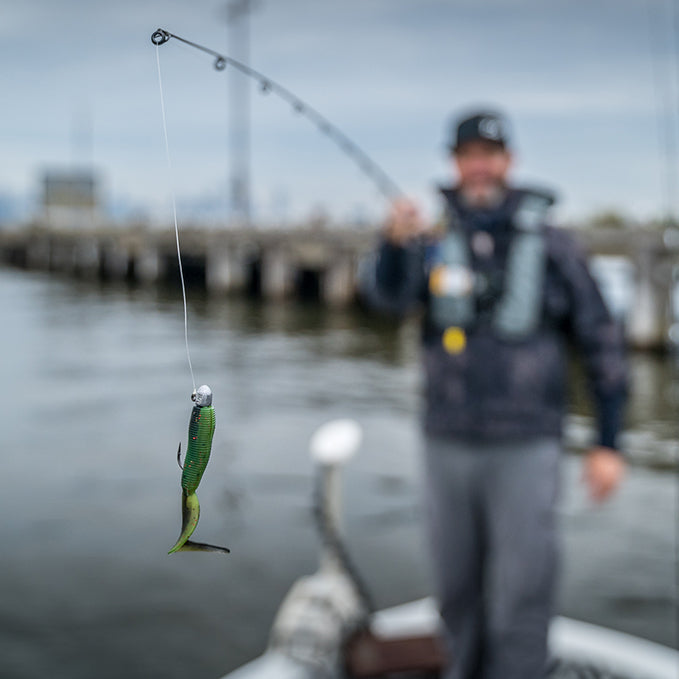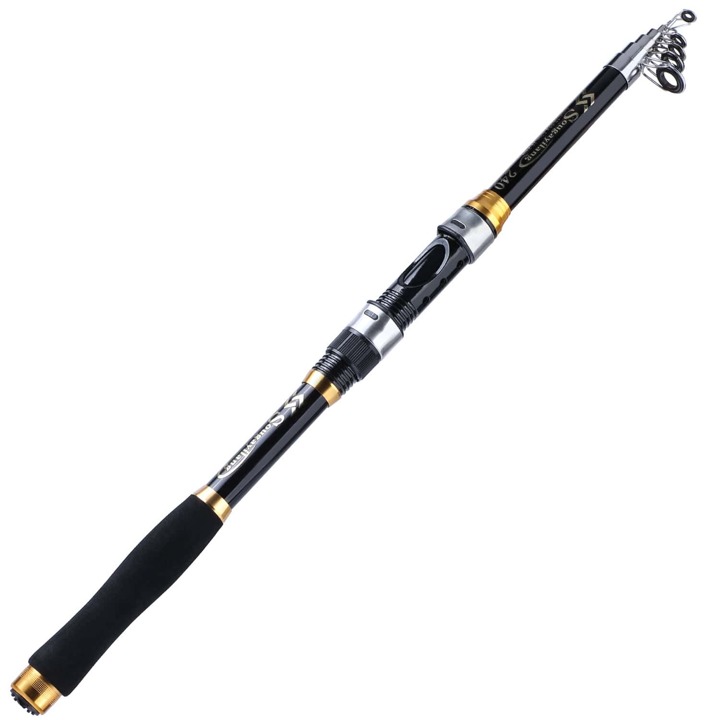Introduction to Spinner Fishing Rods
Spinner fishing rods are specialized tools for anglers. They help cast spinners far and accurate. These rods come in various sizes and styles. Each is designed for different fishing conditions and species. Using the right spinner fishing rod is key to successful catches. It enhances lure action and improves line control. Beginners and pros alike use these rods for their versatility. They work in both freshwater and saltwater environments.
Spinner rods pairs with spinning reels for optimal performance. They are commonly made from graphite or fiberglass. Some combine both materials for strength and flexibility. The handle is usually from cork or EVA foam for comfort. When choosing a spinner fishing rod, consider the rod’s power and action. Power reflects the rod’s strength, while action determines its bend. Customizing your rod to the targeted fish species and environment is crucial. It’s why many anglers have multiple rods. Each rod serves specific scenarios on the water.
In summary, spinner fishing rods are a vital part of an angler’s equipment. They offer precision, versatility, and the right amount of power for spinner baits. Mastering their use can significantly increase your fishing success.

Essential Gear for Spinner Fishing
Spinner fishing requires not just skill but also the right gear. One of the most critical pieces of equipment is, of course, the spinner fishing rod. This specialized rod pairs perfectly with quality spinning reels that ensure fluid motion and reduced line twisting. When assembling your gear, consider also the following essential items:
- Spinning Reels: They must balance well with the rod and handle the weight of your chosen lures.
- Spinner Baits: A variety of spinner baits allows you to adapt to the fish’s preferences and water conditions.
- Fishing Line: Braided or monofilament lines are best suited for spinner fishing. The line should match the reel’s capacity and the rod’s power.
- Hooks and Leaders: Sharp hooks and durable leaders are necessary to secure your catch.
- Tackle Box: A well-organized tackle box keeps your different types of spinners and accessories within reach.
- Fishing Pliers and Scissors: For cutting lines and removing hooks, these tools are must-haves.
Choosing high-quality gear enhances your ability to cast accurately and feel the slightest bite. Whether you’re targeting small freshwater fish or larger saltwater species, the right gear makes all the difference. Always ensure every piece of your equipment, from the spinner fishing rod to the smallest hook, is in top condition before hitting the water.
The Mechanics of Casting with Spinners
The art of casting with a spinner fishing rod involves precision and finesse. To achieve the best possible cast, it’s important to understand the mechanics behind it. Here’s a step-by-step breakdown to help you master casting with spinners:
- Grip the Rod: Hold the spinner fishing rod with a relaxed grip. Your hand should be near the base of the reel.
- Position the Rod: Before you cast, angle the rod so that the tip is pointing slightly upwards.
- Load the Rod: Pull back smoothly, allowing the rod to bend (load) with the weight of the lure.
- Forward Cast: Swiftly move the rod forward in a straight line, releasing the line at the peak of the rod’s forward motion.
- Follow Through: Continue the movement of your arm in the direction of the cast to ensure a straight trajectory.
- Control the Spool: As the lure travels through the air, use your finger to control the spool and prevent backlash.
By understanding and practicing these mechanics, anglers can cast their lures with greater accuracy and distance. It’s important to note that each cast may require adjustments based on wind conditions, the weight of the lure, and the desired target area. Regular practice will improve your skills and make casting with a spinner fishing rod second nature.

Key Spinner Fishing Techniques
Mastering key spinner fishing techniques can enhance your catch rate and overall fishing experience. Here are several techniques every angler should know:
- The Steady Retrieve: Keep a constant pace when reeling in the line. Adjust your speed based on the fish’s activity level and water conditions.
- Varying Retrieves: Mix up retrieval speeds and motions. Sometimes erratic retrieves trigger bites from less active fish.
- Lift and Drop: Let the spinner sink, then reel in slowly while periodically lifting the rod tip. This mimics a wounded baitfish.
- The Slow Roll: Retrieve the spinner bait just fast enough to keep the blade spinning. It works well for deeper waters.
- Using Cover: Cast near structures like logs, rocks, or weed beds. Spinners can lure out fish hiding in these areas.
By incorporating these techniques into your approach with a spinner fishing rod, you can adapt to various fishing environments and behaviors of fish. Remember to practice each technique and find what works best for the species you are targeting. Regular use of these strategies will no doubt lead to improved efficiency and effectiveness on the water.
Understanding Spinner Bait Types and Their Uses
When it comes to spinner fishing, choosing the right bait is crucial. Here’s a guide on spinner bait types:
- Standard Spinners: These have a metal blade that spins around a wire shaft. They work well in clear water.
- Weedless Spinners: Designed to prevent snagging in heavy cover. They allow fishing near vegetation.
- In-Line Spinners: The blade spins directly on the line. Good for targeted casting in streams.
- Safety Pin Spinners: These look like a safety pin. The blade spins away from the body to minimize tangles.
- Tail Spinners: Featuring a trailing blade, they create vibration and flash at the end of the bait.
- Dressed Spinners: They come with a feathery or hairy tail. The dressing adds visual appeal to attract fish.
Each type has its uses. Standard spinners catch a variety of fish. Weedless ones are best where there are lots of plants. In-line spinners work well in running water. Safety pin spinners are versatile in most conditions. Tail spinners excel at depths and when fish are less active. Dressed spinners entice fish with their life-like appearance.
Selecting the right spinner bait involves knowing where you’re fishing. Look at water clarity, cover, depth, and fish species. Adapt your choice to these conditions for the best results. Use a spinner fishing rod that matches the weight of your chosen bait. This ensures optimal performance and improves catch rates.
Perfecting Retrieval Speeds and Patterns
Perfecting retrieval speeds and patterns is key when using a spinner fishing rod. The way you reel in your lure can make or break your catch rate. Here are some tips to help you refine your retrieval technique:
- Start Slowly: Begin with a slow, steady retrieve to gauge the fish’s interest. Watch for any signs of a bite.
- Speed Up Gradually: If there’s no action, gradually increase your speed. This can entice fish looking for fast-moving prey.
- Pause and Twitch: Every so often, pause your retrieve. Add a small twitch to simulate a living creature. This can trigger strikes from predatory fish.
- Rhythm Variation: Vary the rhythm of your retrieve to mimic natural prey movements. Constant speed can sometimes go unnoticed.
- Monitor Line Tension: Keep a close eye on your line tension. Sudden changes may indicate a bite or that your spinner is hitting cover.
- Practice Different Patterns: Experiment with different retrieval patterns. Some fish prefer a zig-zag motion while others respond to a more straight-line approach.
- Match the Hatch: Observe the local baitfish and try to match your retrieve to their swimming patterns. This makes your spinner more irresistible.
By practicing these retrieval methods, you’ll become more adept at using a spinner fishing rod. Each water body and fish species may require different approaches, so remain adaptable and observant. Consistent practice will enhance your technique, leading to more successful fishing trips.

Tips for Choosing the Right Spinner Rod
Choosing the right spinner fishing rod can be overwhelming. Here’s how to simplify that choice:
- Consider Your Target Species: Different fish need different rods. Pick a rod suited for what you’re after.
- Think About Rod Length: Short rods offer more control. Long rods cast further. Match the length to your fishing style.
- Choose the Right Power: Rod power should match lure weight and fish size. Light, medium, or heavy powers are available.
- Look at Rod Action: Fast action rods bend near the tip. Slow action rods bend near the handle. Choose based on the precision you need.
- Balance with the Reel: Your spinning reel should fit the rod’s weight and balance. This combo increases casting accuracy.
- Material Matters: Graphite is sensitive and lightweight. Fiberglass is tough and durable. Some rods combine both for the best of both worlds.
- Handle Comfort: Ensure the rod has a comfortable grip. Cork or EVA foam handles are common and can reduce hand fatigue.
- Test the Rod: If possible, try before you buy. A ‘test cast’ can confirm if the rod feels right for you.
Making the right choice in a spinner fishing rod is vital. It affects your comfort, casting ability, and catch rate. Take your time and choose wisely to enjoy your time on the water.
Common Mistakes to Avoid in Spinner Fishing
Spinner fishing can be highly rewarding, but it’s also easy to make mistakes that can limit your success. To enhance your spinner fishing rod techniques, here are common errors to watch out for:
- Ignoring Water Conditions: Not considering the water clarity, temperature, and flow is a common oversight. Select spinner baits that suit these elements.
- Using Incorrect Rod Power: A rod too light or too heavy for your bait impacts casting and retrieval. Match the power to the bait size.
- Improper Lure Size: Using lures that are too big or small for the targeted fish can lead to a poor catch rate. Choose accordingly.
- Sticking to One Speed: Retrieving at a constant speed can be less effective. Vary your retrieve to mimic live prey.
- Forgetting to Observe: Not watching for fish behavior and environmental cues can decrease chances of a catch. Stay observant.
- Neglecting Rod Maintenance: Failure to clean and maintain your spinner fishing rod can lead to poor performance. Regularly check for wear.
- Overlooking Weather: Weather impacts fish activity. Ignoring it can make fishing efforts futile. Change tactics with weather changes.
Avoiding these mistakes can make a substantial difference. Remember, practice is key to mastering spinner fishing rod use. Keep refining your techniques for the best results.
Advanced Tactics for Seasoned Anglers
Seasoned anglers often seek to refine their spinner fishing rod skills further. Advanced tactics can give an edge in challenging environments. Here are some expert strategies to consider:
- Use the Environment: Skilled anglers use natural currents to their advantage. They allow spinners to drift naturally, mimicking live prey.
- Target Transitions: Look for areas where different habitats meet—edges of weed beds, drops, or where currents collide. Fish often gather in these transition zones.
- Tweak Your Lures: Modify spinners by bending blades or adding weight. Small changes can create unique movements in the water, catching the eye of curious fish.
- Pay Attention to Sound: Some fish are more sensitive to noise. Light taps on the rod handle can send vibrations down the line, making the spinner more noticeable.
- Precision Casting: Master casting techniques to place your spinner exactly where you want it. This can be crucial when targeting fish in tight spots.
- Seasonal Strategies: Change your approach with the seasons. Fish behaviors shift with water temperature changes. Adjust your tactics to match these patterns.
- Night Fishing: Some species are more active after dark. Use darker colored spinners that create silhouette contrasts against the night sky.
Remember, these advanced tactics require practice. Use them with a nuanced understanding of your spinner fishing rod and local fish behavior. Together, they can dramatically improve your catch rates.
Cleaning and Maintenance of Spinner Fishing Rods
Proper care extends the life of your spinner fishing rod. Follow these simple steps:
- Rinse After Use: Always rinse your rod with fresh water after fishing to remove salt, dirt, and debris.
- Wipe Down: Dry your rod with a soft cloth to prevent water spots and corrosion.
- Check Components: Examine the guides, handle, and reel seat. Look for signs of wear or damage.
- Lubricate Reel: Apply reel oil to keep moving parts smooth and prevent rust.
- Store Properly: Keep your spinner fishing rod in a dry, cool place. Avoid direct sunlight.
- Handle with Care: Avoid bending the rod excessively or knocking it against hard surfaces.
- Regular Inspection: Periodically inspect the entire rod, especially before a big trip.
By performing these maintenance tasks, you ensure better performance and durability of your spinner fishing rod. Regular cleaning prevents build-up that could hinder your casting and retrieval. Mindful handling guards against accidental damage. Your gear will remain reliable trip after trip.
